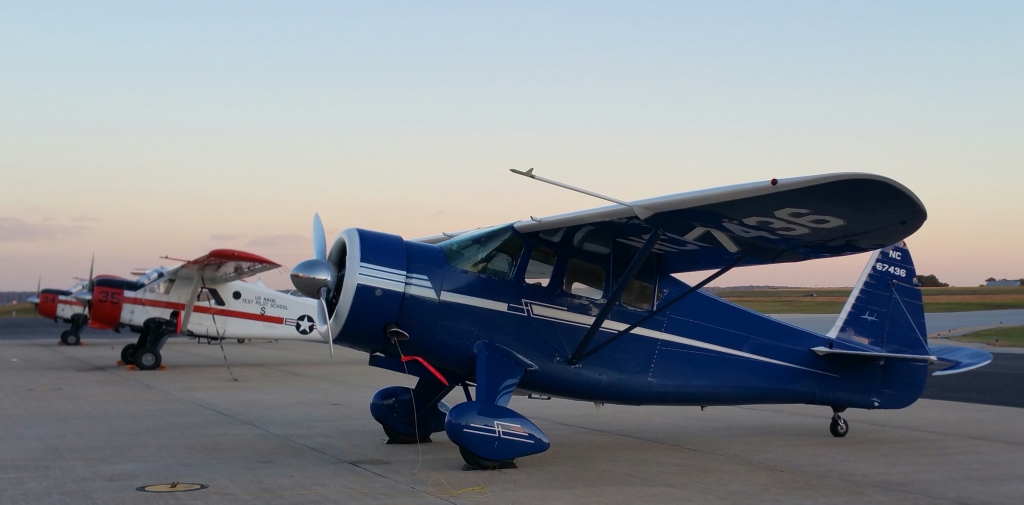
General:
- Side-by-side crew station seating with full dual controls.
- A spacious rear seat comfortably accommodates two observers. The aircraft is equipped with a 4-place intercom and has noise-cancelling headsets.
- Certified for IFR flight. Equipped with IFR GPS and approved for enroute and IFR approach navigation.
Aircraft Characteristics
- Crew: one, pilot
- Capacity: 3-4 passengers
- Length: 25 ft 8 in (7.82 m)
- Wingspan: 38 ft 0 in (11.58 m)
- Height: 8 ft 5 in (2.57 m)
- Wing area: 210 ft² (19.5 m²)
- Airfoil: NACA 2R212 (reflexed)
- Empty weight: 2,700 lb (1,225 kg)
- Maximum Gross weight: 4,500 lb (1,973 kg)
- Powerplant: 1 × Pratt & Whitney R-985 radial engine, 450 hp (336 kW)
Performance
- Never exceed speed: 235 knots (270 mph, 437 km/h)
- Maximum speed: 175 knots (201 mph, 323 km/h)
- Range: 1,095 nm (1,260 mi, 2,028 km)
- Service ceiling: 21,000 ft (6,555 m)
- Rate of climb: 1,800 ft/min (550 m/min)
- Wing loading: 21.3 lb/ft² (104.7 kg/m²)
- Power/mass: 0.100 hp/lb (0.165 kW/kg)


The Howard DGA-15P is a derivative of the Howard DGA-6, aka “Mister Mulligan”, which became the first aircraft to win both the Bendix and Thompson air race trophies in 1935. The DGA-15P was originally marketed as a business liner in the later 1930s and later became part of the US military’s inventory. This particular aircraft served at NAF El Centro, California in the 1940s.
The Howard’s design origin as “racer turned business-liner” give it interesting handling qualities (both in the air and on the ground) and performance. These differences represent excellent “discovery opportunities” for the short course test pilot under instruction. For example:
- The Howard’s sliding-yoke control in the longitudinal axis control induces a large amount of friction, making the trim speed band quite wide. This feature combined with the aircraft’s high longitudinal stability has unique implications in an aircraft designed to cruise at high airspeeds.
- This Howard does not have rudder trim. The Howard’s small rudder and wide range of airspeed makes “the inability to trim directionally” a readily recognizable deficiency. In addition, the small rudder effective directional control highly dependent on propeller blast and whether the tail wheel is on the ground or “up” during takeoff and landing.
- The landing gear is an oleo design with two large compression springs on each main gear, making it very effective at absorbing shock on rough takeoff and landing surfaces. However, this design masks directional feedback (side-force) to the pilot which can delay pilot recognition of directional deviations during ground maneuvering.
- The Howard’s high wing loading make it a very smooth and stable ride, as one would desire for a traveling aircraft, however it makes the stall characteristics abrupt with little warning as the stall angle of attack is approached.
- The operating airspeeds of the Howard are notably higher than other similar aircraft of the era.

1943 Howard DGA-15P, N67436, s/n 1743